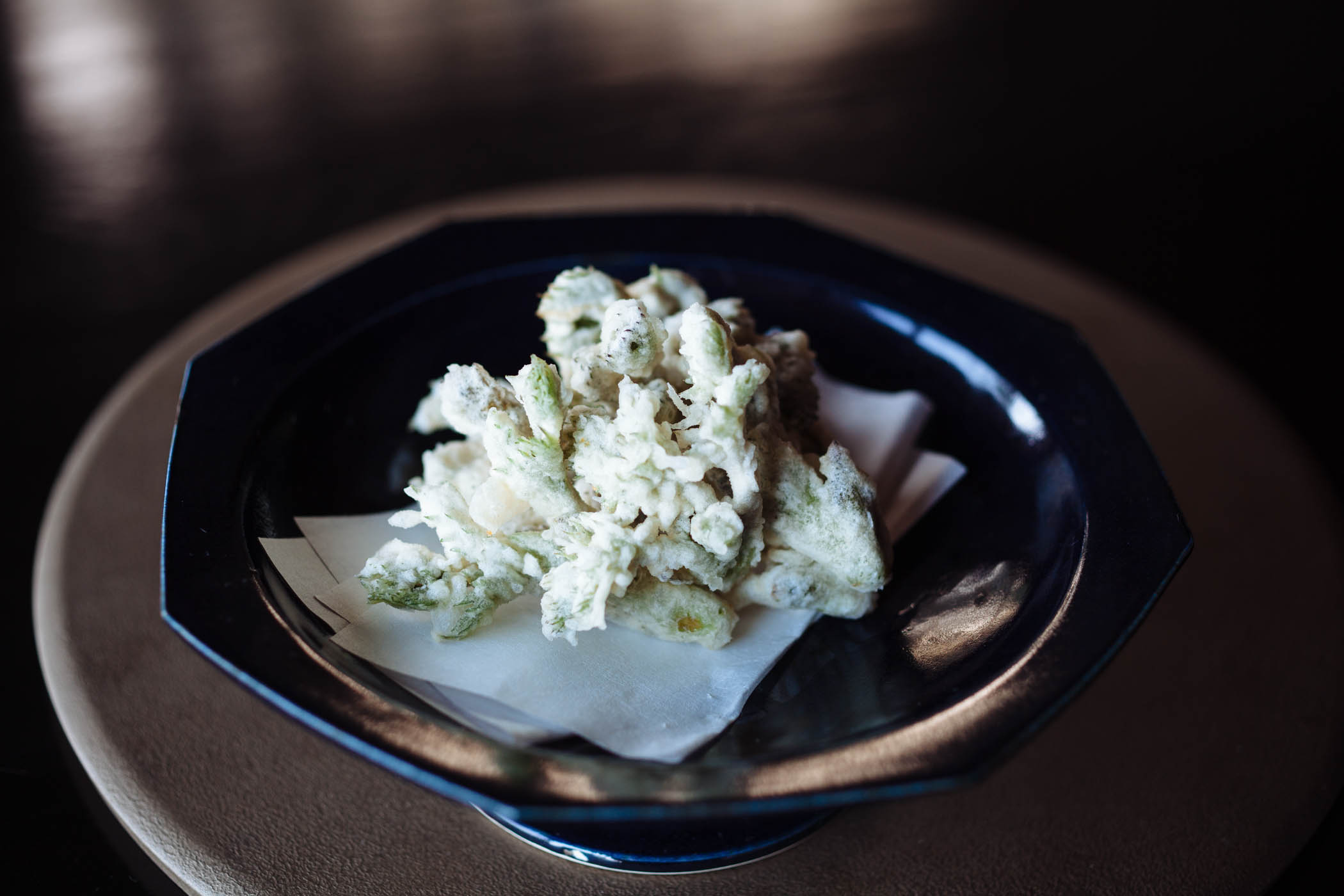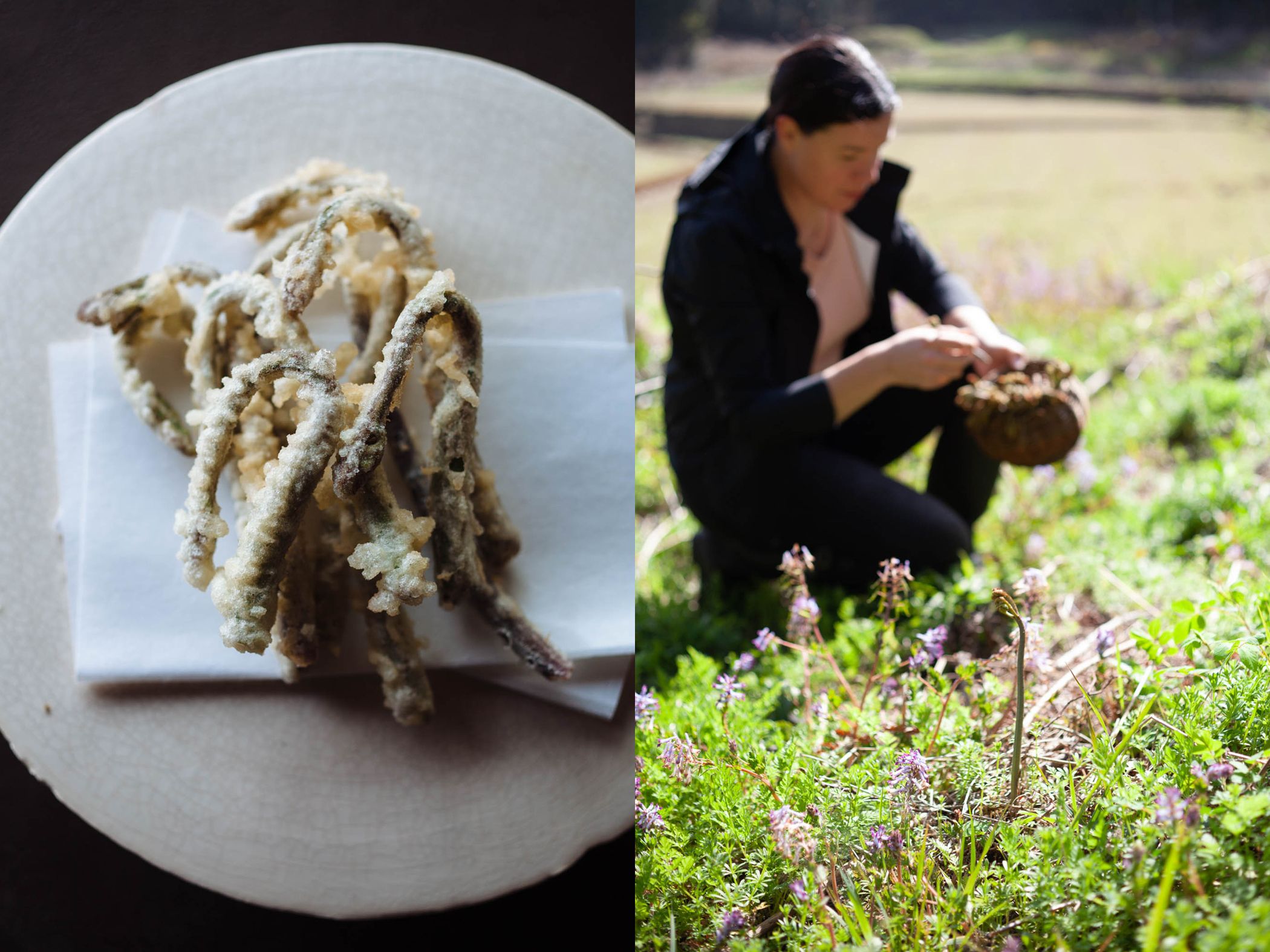A prayer to humbly receive
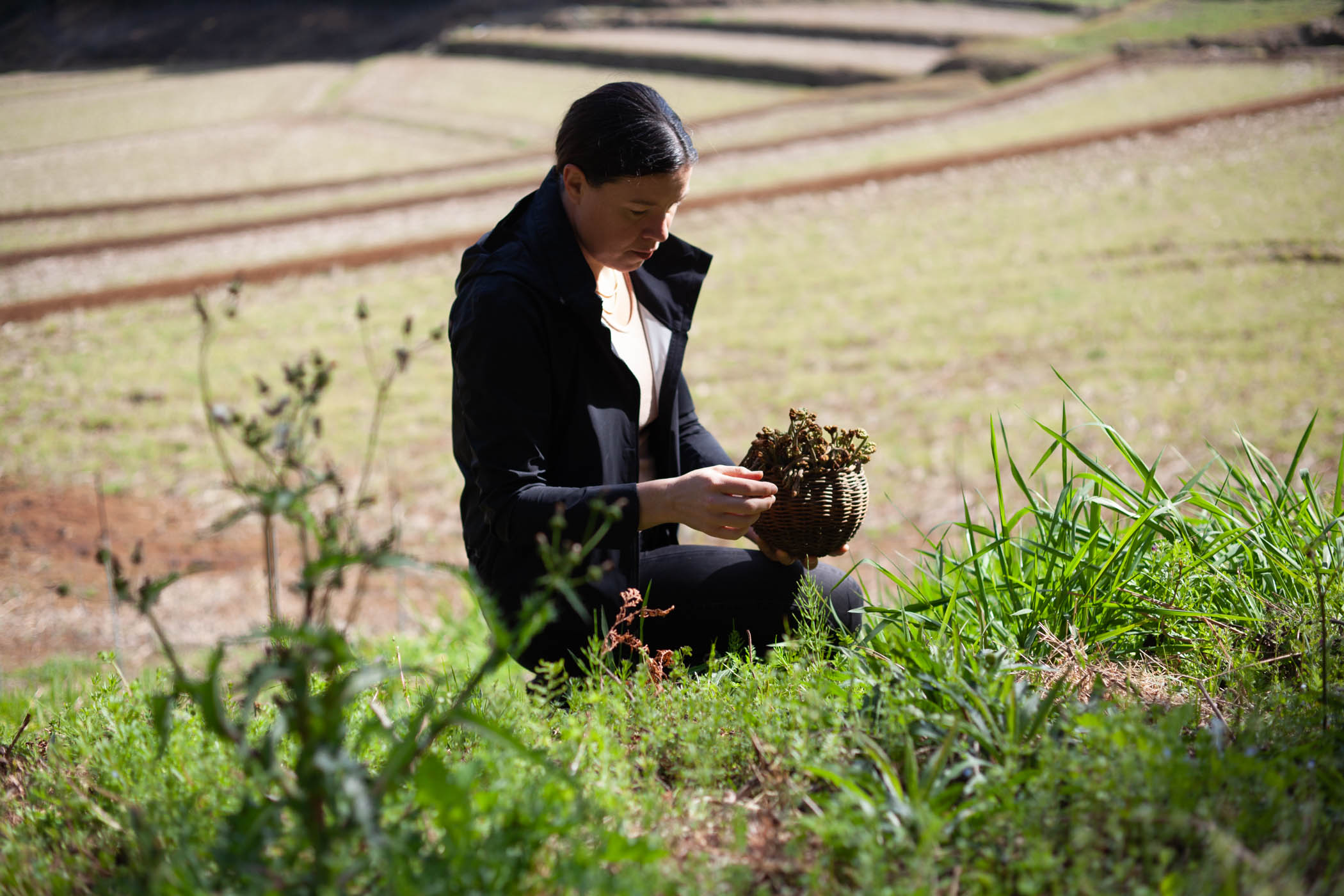
Each day dawns a bit warmer, burns a bit brighter, and lasts a bit longer than the one that came before. How grateful we are to be tilted towards the sun again. Spring sprints forward and she waits for no one. She’s on a mission to plaster the hillsides in ever strengthening shades of green. In her haste she leaves behind a fleeting trail of glory. Blossoms unfurl, hesitate agape, and then come undone, fluttering to the ground. New leaves emerge, all at once over night, in a shower of newborn green.
We race to keep up. The sansai season of greens collected from the wild gathers momentum. Tsukushi (horsetail) spills into watercress and warabi (bracken ferns). Taranome, the buds of the angelica tree and the queen of sansai, arrive at the midway point of this invigorating interim between late winter and early summer. Their appearance marks the end of the bitter early spring vegetables and portends the milder, fuller bodied varieties to follow. In a lusty dash towards summer the micro season in which to catch taranome in their prime is shorter than ever. We watch closely day in and day out. The wait is long, the window sudden and short.
It would be specious to say that we forage for taranome. Though the hillside in front of our house is tamed, there is still wildness all around, including a thicket of taranome just outside our door. The prickly, spindly stalks are far less picturesque than my glorious momiji and sakura trees and yet more highly prized. Taranome cleave from needly stalks and send spiky shoots accelerating up and out. Each bud is prime for only a day and knowing that yesterday would have been too soon and tomorrow will be too late, I’ll find myself tangled in the underbrush in the blue glow of twilight, arms and clippers reaching up towards the darkening sky to harvest them for dinner.
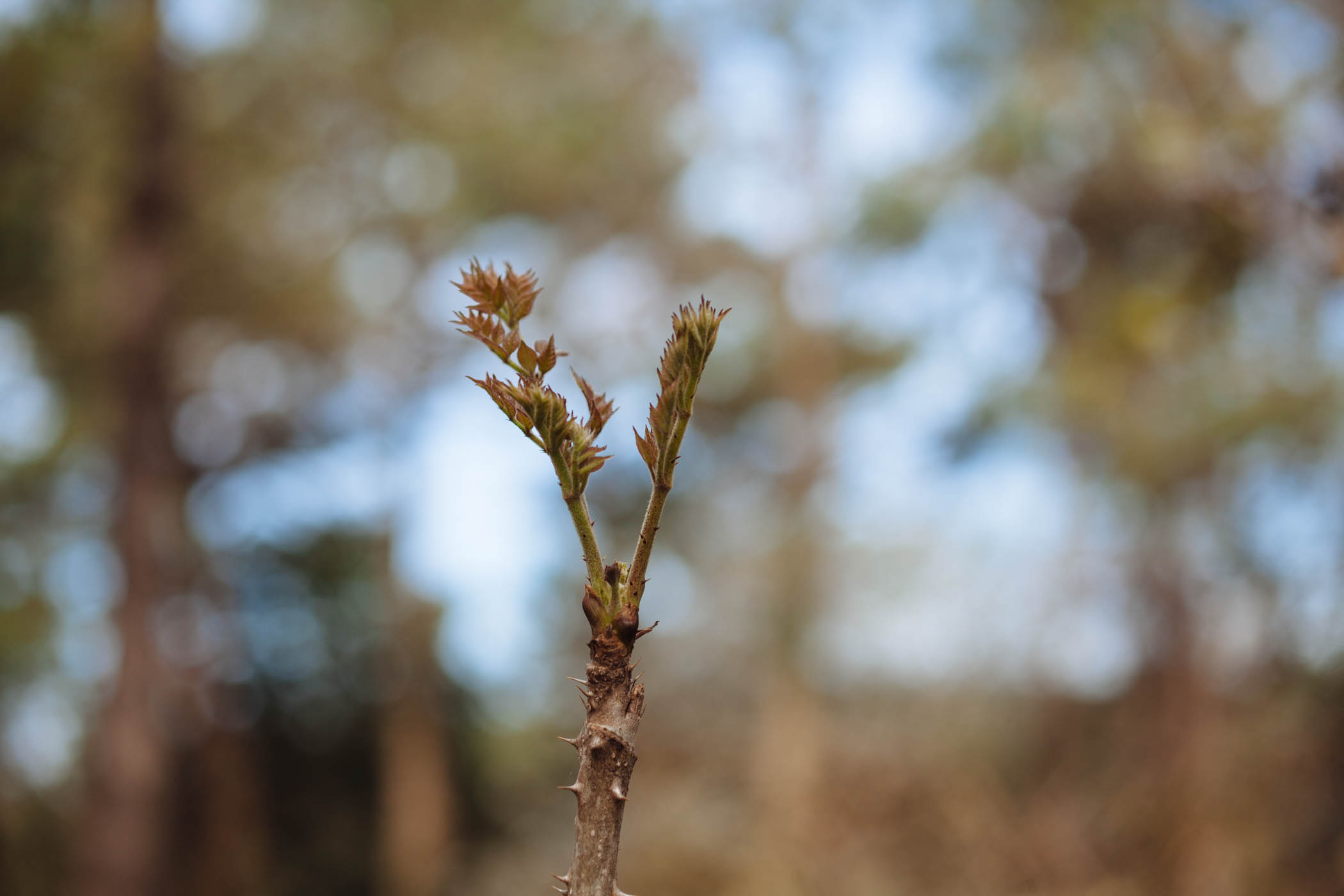
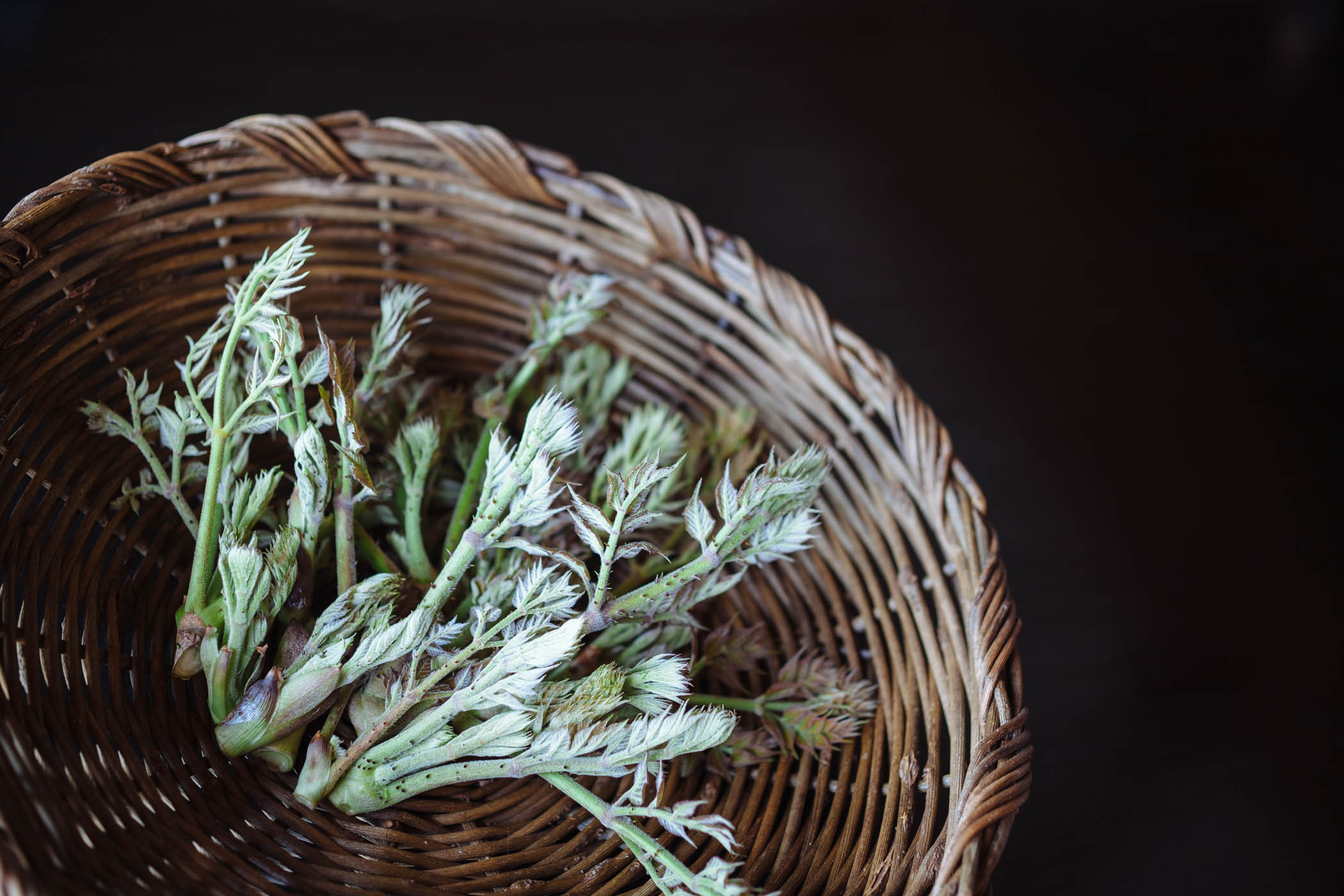 Meanwhile ferns are shooting up everywhere. We gather handfuls of warabi, bracken fern, caught before they unfurl. Every year, every wild vegetable we forage is first enjoyed as tempura. Each time I heat up a pot of oil I think to myself that tempura is better left to the professionals. But so many spring vegetables beg to be lightly battered and deep fried and so year after year I try my hand. I’ve learned a few things about tempura over the years. The batter must be very cold and stirred minimally so as not to develop gluten, and just a few items at a time must hit plenty of hot oil. Tempura is percussive and asks that you lend it your ear. A slow sputter like a cold engine indicates a soggy bite to come. You know the oil is just right when the buds bob and sizzle, the sound as crisp as the batter it fries. There is something entirely satisfying about the immediacy of tempura to treat these freshest of vegetables. At the first crunchy bite the aroma, riding on a plume of steam, reminds us of their recent wildness. And like anything at its prime, a few grains of your best sea salt and a squeeze of lemon are all it asks.
Meanwhile ferns are shooting up everywhere. We gather handfuls of warabi, bracken fern, caught before they unfurl. Every year, every wild vegetable we forage is first enjoyed as tempura. Each time I heat up a pot of oil I think to myself that tempura is better left to the professionals. But so many spring vegetables beg to be lightly battered and deep fried and so year after year I try my hand. I’ve learned a few things about tempura over the years. The batter must be very cold and stirred minimally so as not to develop gluten, and just a few items at a time must hit plenty of hot oil. Tempura is percussive and asks that you lend it your ear. A slow sputter like a cold engine indicates a soggy bite to come. You know the oil is just right when the buds bob and sizzle, the sound as crisp as the batter it fries. There is something entirely satisfying about the immediacy of tempura to treat these freshest of vegetables. At the first crunchy bite the aroma, riding on a plume of steam, reminds us of their recent wildness. And like anything at its prime, a few grains of your best sea salt and a squeeze of lemon are all it asks.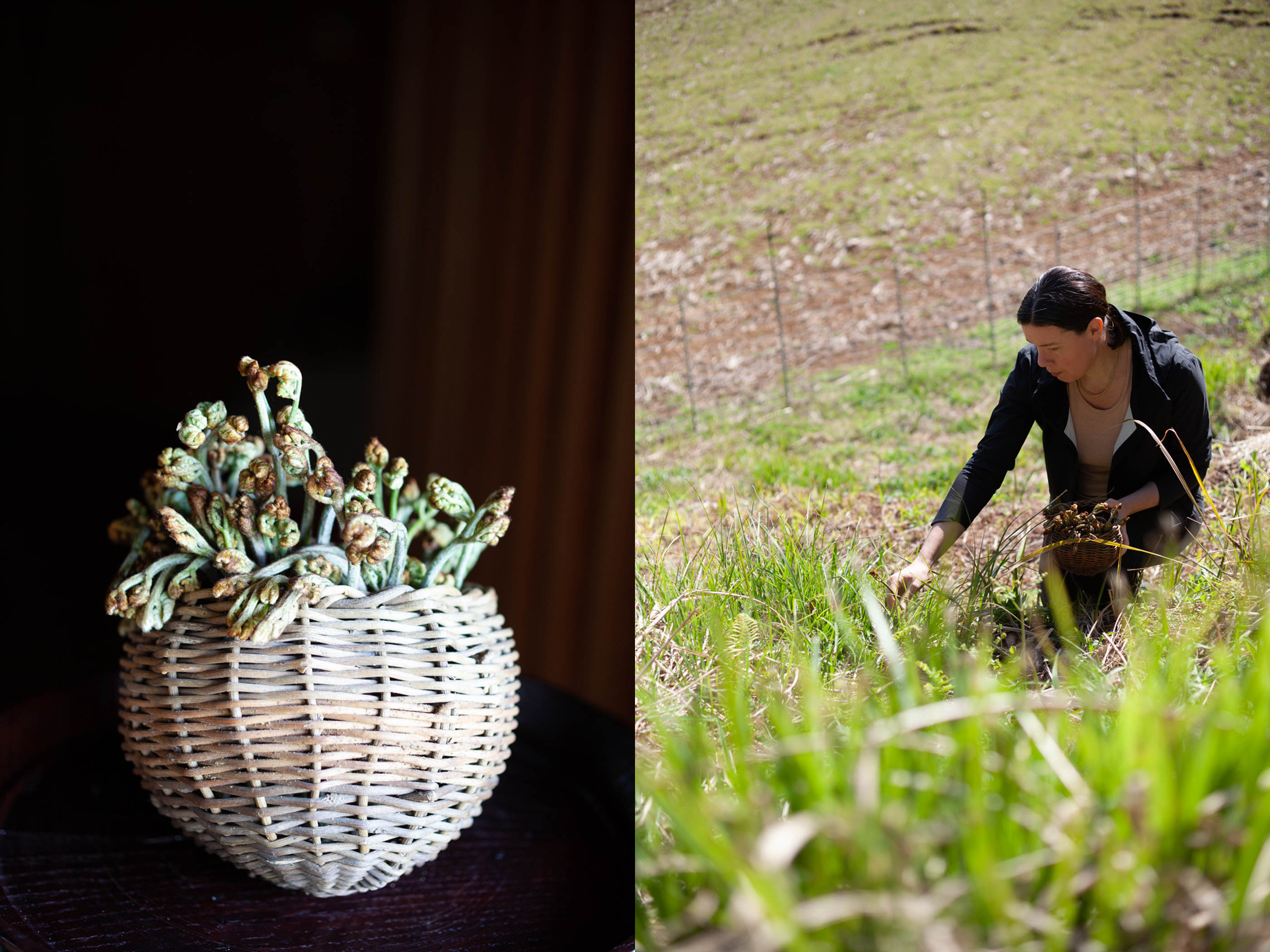
Sitting before a plate of warabi and taranome tempura, I’m grateful to be fully engaged in the evanescent warmer half of spring. We press our palms together and say grace in a single word, itadakimasu. As the five syllables pass our lips we pronounce I humbly receive. It’s a deep and far reaching phrase that illustrates how sitting down to a meal in Japan is intimately and equally tied to the physical, to the soil and water from which the ingredients come, and to the sacred, to spirit and faith. Itadakimasu is a brief but potent meditation in which we honor the spirit in all things before raising our chopsticks to begin a meal, a profound and beautiful word expressing gratitude for the animals and plants whose lives we have ended in order to continue our own. In saying I receive, we recognize our debt to the farmers, fishermen, and producers who ushered the ingredients of the meal at hand into our kitchen and we acknowledge the cook who tenderly prepared the dishes we will imminently relish. As our bodies are nourished by the nutrition of these plants and animals, the spirits in them are said to replenish our own. A single, simple word acknowledges all the honor and gratitude that befits the occasion.
Time and again I’m struck by these deceptively simple daily acts that express astonishing breadth and depth of consciousness. In a slight gesture, the scent of a room, the damp stones outside an entrance, the warmth of a bowl, each and every orchestrated and carefully restrained act of kindness voices sympathy for the human condition. To show concern for those we encounter in the course of a day and appreciate the concern of others enriches our lives and draws us into belonging. It deepens our relationships with the human, the natural, the physical, and the spiritual, the very relationships that determine a good life. Whether plucking ferns from the earth or reaching clippers towards the sky I feel the bounty of the season and whisper itadakimasu.
